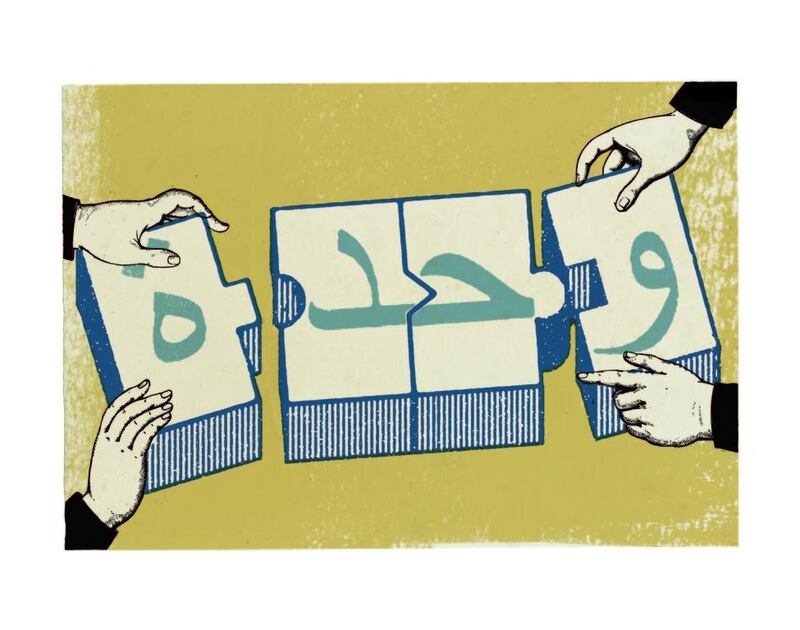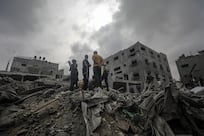weekend eye
Without much fanfare, Thursday marked Arabic Language Day, which celebrates the status of Arabic as one of the six official languages of the United Nations. Spoken by about 300 million people as a native language, Arabic is also used liturgically to varying degrees by the world's 1.6 billion Muslims.
"By celebrating the Arabic language, we are also acknowledging the tremendous contribution of its writers, scientists and artists to universal culture," said Unesco director-general Irina Bokova during a previous edition.
The Arabic language gave us not only timeless contributions to philosophy, the sciences, literature and art, but also to the formation of modern Arab identity and nationalism.
"Every Arabic-speaking people is an Arab people. Every individual belonging to one of these Arabic-speaking peoples is an Arab," claimed Sati Al Husri (1882-1968), an early Arab nationalist of Syrian extraction who, ironically, grew up in a well-to-do family that was closely linked to the Ottoman Empire.
Al Husri believed that this common linguistic heritage gave Arabs "one heart and one spirit", which, in turn, qualified them both as a single nation and a single state. This romantic notion was central to efforts to create secular Arab nationalism, from Baathism to later Nasserism. Michel Aflaq, one of the founding fathers of Pan-Arabist Baathism, believed that both language and history were unifying forces for Arabs.
But surveying the current state of destructive disunity plaguing the Arab world, one might be excused for wondering why, if Arabs truly are of one spirit, they have failed so dismally to beat together as one heart?
Not only did the dream of a single Arab nation collapse many years ago, even the individual nation states so despised by pan-Arabists are crumbling before our eyes, with the two strongholds of Baathist ideology, Syria and Iraq, lying in smouldering ruins. How did we arrive at this sorry state?
Diehard pan-Arabists place the blame squarely on imperialism, with the conservative Arab regimes and with the failure of the revolutionary regimes to implement pan-Arabism properly.
Some old-school Arab nationalists with whom I've spoken portray Syria as having been the last bastion of pan-Arabism and the last hope for the Arab nation, and claim that is why the West wants to bring it down.
The trouble with this theory is that Syria, even before the uprising, had long stopped even trying to pay lip service to pan-Arab ideals.
Moreover, placing the bulk of the blame at the outside world's feet facilitates a dangerous level of self-deception. It also curtails an honest analysis of why pan-Arabism failed.
While it is true that, in its heyday, pan-Arabism, such as the Nasserist model, had many foes, both regionally and in the West, it also contained many of the seeds of its own downfall.
One major failing was the utopian idea that just because millions of people spoke the same language, they somehow constituted a single nation whose nature was unity and, so, any discord was seen as going against the natural order.
This is in spite of the fact that, as in Europe until recently, the Arab world has never been unified except at the point of a sword – and often simultaneously under the control of competing empires or dynasties.
But even linguistically, Arabs are not unified.
While some dialects of Arabic are mutually intelligible, others are so far removed that, in other contexts, they would be classified as separate languages. For example, even after years of exposure to Moroccans in Europe, I, as an Egyptian, still do not understand their darija, or dialect.
This is why Arabs from different countries often resort to Fusha (Modern Standard Arabic) to make themselves mutually intelligible. However, not all Arabs can speak Fusha and some can struggle to communicate in it fluently.
And just like linguistic diversity is concealed under the umbrella of "Arabic", so too has social, cultural, economic and political diversity traditionally been glossed over in Pan-Arabist discourse, as if it were an inconvenience rather than a reality.
Despite some common features between clusters of Arab societies in terms of culture and history, there is a mind-boggling array of differences not only between Arab states but also within them.
This clash between ideology and reality is one factor behind pan-Arabism's efforts to suppress diversity rather than to accommodate and celebrate it.
But the idea that speaking the same tongue makes us "one" has reduced the concept of Arab unity either to hollow slogans or to disastrous marriages that were rushed into hastily and impatiently, such as the damaging United Arab Republic (Syria and Egypt), the United Arab States (the UAR and North Yemen) the Federation of Arab Republics (Libya, Egypt and Syria) or the stillborn Arab Islamic Republic (Libya and Tunisia).
Today, as much as a century ago, the region desperately needs to find a way to rise out of the ashes of conflict and weakness and towards a future of cooperation and strength. This time, the utopian dreams and hollow slogans of yesteryear are gone.
In their place, an organic, bottom-up process of common identity building is taking place, spearheaded largely by young people. From pan-Arab TV hits like Arab Idol to the previously unthinkable level of interaction facilitated by social media, Arabs are discovering their rich diversity as well as the shared features of their identities and common causes.
This loose sense of a common plight and a common destiny was reflected, four years ago, in how the frustration of people in Tunisia spread like wildfire across the region.
In the early days of the Egyptian revolution protesters borrowed Tunisian slogans and chanted "We are all Tunisia", while activists exchanged tips for dealing with police and tear gas.
Despite the continuing collapse of the current Arab order, this grassroots route to greater cooperation offers some hope for the future.
Khaled Diab is an Egyptian-Belgian journalist based in East Jerusalem. He is the author of Intimate Enemies: Living with Israelis and Palestinians in the Holy Land
On Twitter: @DiabolicalIdea
The language of the Arabs has more often divided than united
Arabic Language Day this week celebrated the contribution of Arabic to culture and science. But Arabic, writes Khaled Diab, has more often been used as a tool of politics.

Comment Latest
COMMENT




